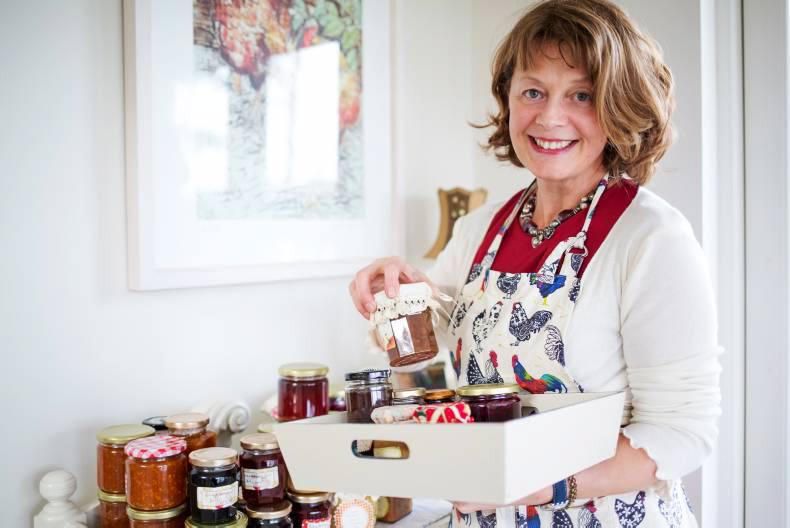Growing up in our house, gooseberry jam was a staple for spreading on brown bread and every summer we made at least 40 pounds of it. Nowadays my family are not too fond of it. So the poor gooseberries used to languish in my freezer all year as I sneaked them into crumbles and smoothies, hidden among the apples.
Then I discovered the wonder of curds and I’ve never looked back. Not only do I have my own gooseberry bush in the plot, but I am blessed to have access to a Victorian walled orchard. It’s filled with all kinds of fruit trees and bushes, carpeted with wild strawberries surrounded by a high stone wall; in other words, a magical place. The owners kindly let me pick the gooseberry bushes bare.
There is something lovely about picking a gooseberry branch laden down with fruit. As someone reared not to let anything go to waste, I am overrun with buckets of gooseberries, oodles of blackcurrants, and apple season hasn’t even started yet. But since I discovered curds and jellies, I can’t get my hands on enough berries.
You can use those big fat over-ripe berries and of course any you may have left over can put in the freezer. For the jellies, you don’t even have to top and tail – just put the whole lot into the pot.
Easy to make
Curd is a doddle to make – you can drizzle it over Pavlovas, use as a filling for cakes, do artistic decorations on the plate the way they do in restaurants or, like me, just have it on toast. Even my gooseberry-hating husband loves gooseberry curd.
I make it in little pots and I always use screw-on lids rather than cellophane. I use little pots for curds as they are not preserves and don’t keep once opened, so a small pot is ideal. I used to have everyone in the house eating a certain brand of yoghurt so I could reuse the little jars, but now I buy jars from Allpac in Sandyford as I was driven demented washing and scrubbing off labels and I never had enough. I make curd and jelly and jam all from the humble gooseberry and have a lovely gooseberry trio to give to friends and neighbours and anyone else who calls to the house – including the postman.
Sadly, this is the very last year of my gooseberry picking from the walled garden as next year it will be a building site … but that’s what they call progress.
As I picked the bushes this year, I thought of all the gardeners and cooks before me and hope I have done them proud with my curds, jellies and jams. So if you have a gooseberry bush, you can Google curd and jelly recipes, but here is what I do.
Gooseberry Curd
Makes about eight little jars
2 lb gooseberries washed, topped & tailed
1 lb caster sugar
3 eggs
4 oz butter
1. Cook the gooseberries over a low heat with the lid on at first. I don’t use any water as there is enough from the washing. When they turn to a mush, take off the lid and let them cook slowly for about 30 minutes. The longer you leave them, the more they will start to turn red. This is OK too.
2. Next, get your sieve and sit it over a bowl and pour the contents of the saucepan into it. Now push the whole lot through with the back of a wooden spoon. I keep at it till I only have seeds left. I always put about a teaspoon of seeds into the mixture too. If you want you can put this into the fridge until the next day.
3. Weigh out the sugar and butter and add it in to the pot. Break three (or four) eggs and beat them well with a fork (you don’t want white stringy bits in your curd).
4. Add in the eggs and stir. Now the recipe books say to use the bain-marie method – also known as a bowl placed over a saucepan of hot water – but I find this way too slow so I just put it straight into the pot and stir it over a medium heat at first and then lower it to a gentle heat once the butter starts to melt. The important thing is not to leave it and not to stop stirring in a figure of eight. Towards the end, I stir for five seconds and then watch the surface for five seconds waiting for the first bubble to break the surface. Once the first bubble appears, it is ready.
5. Have your little pots and lids already sterilised (put them through the dishwasher, otherwise I boil them in a big pot of water). Fill each jar, seal and label. CL






 This is a subscriber-only article
This is a subscriber-only article





SHARING OPTIONS: